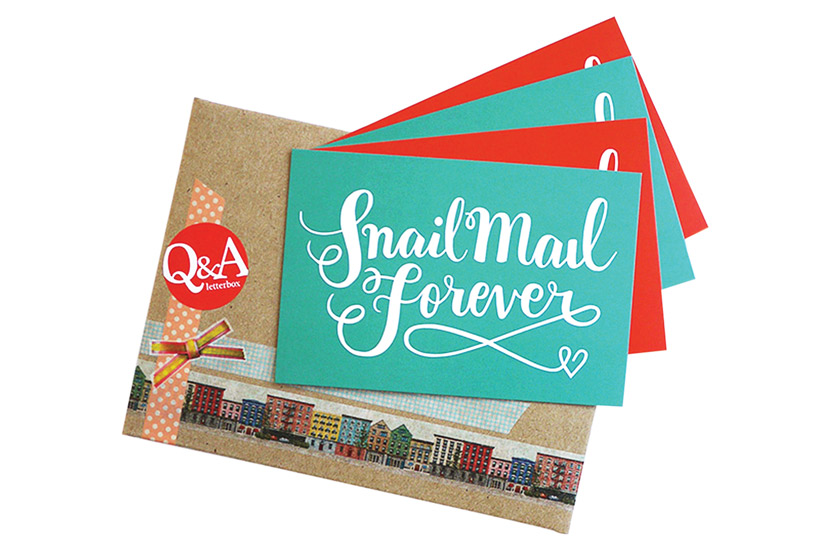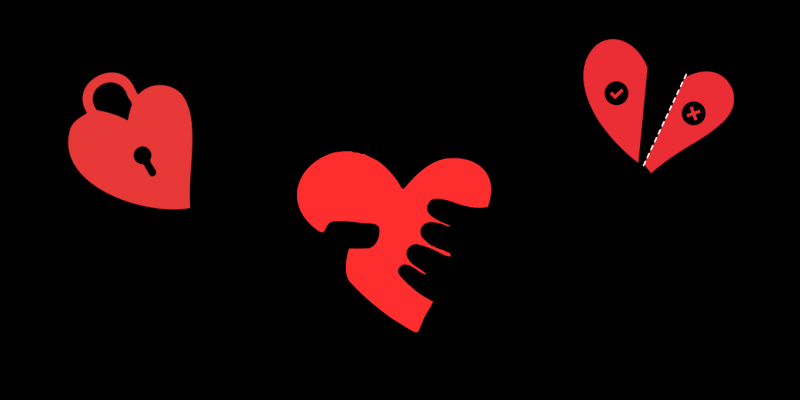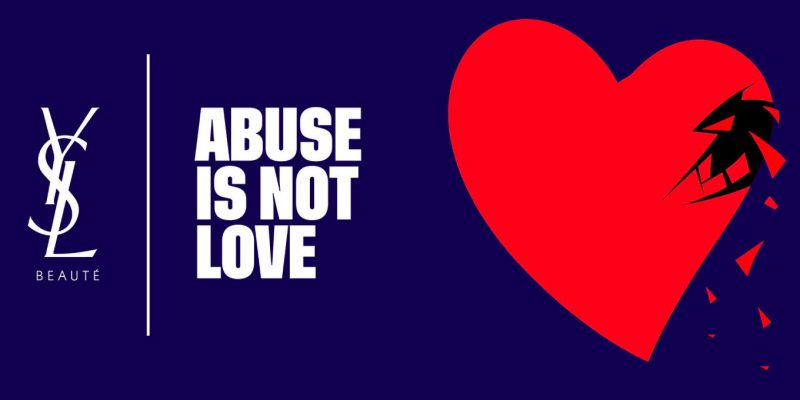Life and Love
Signed, sealed, delivered
How putting pen to paper can boost your friendships - and your cursive-writing skills.
by : Sarah Laing- Mar 11th, 2016

Confession time: I have a secret shame hidden in the bottom of my dresser drawer. Every time I reach in for a pair of socks, there they are, hundreds of them, their number multiplying with each passing month. They are blank greeting cards, and I don’t know what to do with them.
It wasn’t supposed to go this way (and, fine, there aren’t hundreds of them – probably more like 50 or 60). When I signed up for a monthly stationery subscription called Happy Mail last fall, I was excited, anticipating the warm glow I would feel when I turned into one of those people who dash off thank-you cards and witty bons mots to far-flung correspondents. (An engraved Mont Blanc fountain pen featured heavily in these fantasies.)
The subscription was a new launch from a crafty blog I’ve long loved called A Beautiful Mess, and the $15 I’d be spending each month seemed like a small price to pay for upgrading my international relationships from epic WhatsApp chains chock full of emojis to proper “correspondence.” After all, what’s the use of having best friends in Australia and family in South Africa if it doesn’t generate an epic paper trail and a stamp collection that would make a philatelist salivate?
And, if we’re really getting sentimental, I suppose it also felt like a way to make those relationships seem a little more tangible – receiving something that a friend or my grandmother had actually handled, touched and written on might make it feel a little less like those bonds were loosening over time.
Six months later, I have used maybe three of the cards (one wedding, two new babies) and sent exactly zero through the actual mail. And because I signed up for a year, each month a cardboard envelope arrives, filled with a dozen or so adorable, cheery cards emblazoned with such endearingly pun-y sentiments as “Winking of you” and “You’re Swanderful” (accompanied by graphic eyes and swans respectively). I feel like the ultimate curmudgeon for not doing all I can to release that sort of infectious, joyful thoughtfulness into my universe.
READ MORE: Long distance love: Can it survive on Skype alone?
For the first few deliveries, I’d tear open the envelope as soon as I got it, sifting through the cards and mentally bookmarking friends who would get a kick out of a card with a pretzel on it that says “You’re twisted…but I love you” or one that has “You da best” in big block letters. I’d even pop a couple in my bag so that I could write them out on the train on the way to work – only to find them, crumpled and stained, at the bottom of my bag three months later.
Lately, though, I’ve been dumping the new unopened instalments directly into the recesses of my cupboard because having them out reminds me that I’m an awful human being who can’t get off Instagram long enough to congratulate a friend on her engagement in a way that doesn’t involve an iPhone. My spirit is willing, but my will to go out and actually buy stamps is weak.
And I’m not alone in my inability to send out letters. Canada Post is expected to deliver 25-percent fewer items in the next five years – and that includes the growing number of packages that online shopping is injecting into the system. At the same time, receiving letters is becoming less convenient (and a little more soulless) as hulking community mailboxes are phased in and door-to-door delivery is phased out – silencing, for most Canadians, the thunk of a pile of bills and flyers landing on the doormat.
While that’s happening, however, there has been an increase in opeds and think pieces mourning the death of the letter-writing tradition: The Guardian’s Charlotte Higgins noting how her own “letters from friends” drawer stopped filling in 1997, around the dawn of email, and mourning that loss; The New York Times’ Mason Currey devoting thousands of words to his worries over the effect that letter writing’s decline is having on the creative lives and legacies of writers; Vogue’s Jami Attenberg raising the alarm over the replacement of love letters with sexting. The same rallying cry, over and over again: We need more letters! Somebody write more letters, for the sake of the planet! Anybody?
This is why a mini-renaissance in all things handwritten almost feels inevitable. Many of us have felt the hollowness of the “like,” and some are actually putting pen to paper to do something about it – or are trying to.
READ MORE: 36 questions to get to know yourself better
TO THE LETTER Take Andrea Raymond of Toronto, for instance. It wasn’t out of character for the 39-year-old to send out a card or two “just because,” so when she saw a “write a letter every day for 60 days” challenge on Instagram, it piqued her interest. It was January 2014, and she thought it would make a fun New Year’s resolution. So fun, in fact, that when Raymond managed to complete the 60 days – aided by writing prompts and ideas issued daily by the New York stationery company running the challenge – she and a group of women she met on social media through the challenge decided to see if they could make it 365 days. Over a year later, Raymond has found herself with a daily-letter-writing habit.
“It’s a time for me to be meditative,” says Raymond, who corresponds with between 20 and 30 people every month. “Putting pen to paper forces you to slow down, pause and reflect on what you’re going to say, which you might not do if you’re dashing out a text.” She also feels that using ink versus a keyboard changes the quality of what she writes, since there’s a permanence she associates with paper that makes her consider her words more carefully.
(Science backs Raymond up, by the way: A 2008 study in the Journal of Cognitive Neuroscience had a group of adults learn new characters and reproduce them either by hand or on a keyboard; they were then asked to distinguish between these new characters and their mirror images. The participants who’d produced the characters by hand, rather than by keyboard, seemed to have a longer-lasting recognition of them.)
READ MORE: How one woman discovered the power of female friendships
While a portion of Raymond’s correspondents are family and friends, many of the people to whom she writes are fellow letter lovers she met via a small but vibrant online letterwriting community. (Just search the hashtags #snailmail, #write_on and #snailmailrevolution or visit the website for the Letter Writers Alliance or LWA, which was founded by friends Kathy Zadrozny and Donovan Beeson in 2007, to get connected.)
Many of her conversations – like the ongoing one she has with a German au pair living in Sweden – are what she calls “cultural exchanges,” a sharing of each other’s customs and traditions. When commencing a new correspondence, Raymond and other letter writers often rely on “mail tags,” a series of questions to answer (like “Chocolate or vanilla?” and “4 things you do on a lazy day?” – you can find more ideas on the LWA website) that serve as an ink-based icebreaker of sorts. “It struck me that we have to use technology in order to connect not using technology,” she says. “Because how else would you revive snail mail now except through the Internet?”
Raymond, who works full-time in the arts-and-culture sector, enjoys decorating her envelopes and loves thinking about the joy her pen pals get when they open their mailbox and see something other than a bill. She is also contributing to the community in another way: Last year, she launched Q&A Letterbox, one of Canada’s first stationery-subscription services. For $12.50 to $15 a month, subscribers get three Canadian-made cards and one “goody,” like washi tape or a pen. Regardless of whom Raymond is writing to, she follows a simple mantra: “What can bring a little love to their mailbox?”
In many ways, Raymond is representative of letter writing’s real future: people for whom it is a “hobby” – a creative endeavour rather than a practical necessity. There aren’t enough people like her to really call it a “movement,” but a community of the committed certainly exists online, knit together by organizations like the LWA. With a current membership of 8,000, the website creates a space where letter lovers can meet and arranges pen-pal matches between members based on their interests. Even though they add about 20 members a week – from tightrope walkers to farmers – the founders are reluctant to call letter writing “a trend.”
“Letters have been around since paper was invented!” says Zadrozny. “Where I do see interest growing is with kids. When we did a letter-writing event at a festival recently, the majority of the people in our tent were under the age of 15. It was amazing to see these young kids get inspired while tapping out a note on a typewriter or decorating an envelope to mail off to a friend. There is a moment where it just clicks – there is this light of excitement in their eyes that is just stunning.” That said, the majority of LWA’s membership is between the ages of 18 to 27 and 45 to 65.
READ MORE: Feminism’s online renaissance
“This bookend of ages makes sense when you think about it,” explains Zadrozny. “The younger group is when you go away to college and right before you start your career. The other end of the age group is when your kids go away to college or when you retire from your job.”
THE POWER OF THE POST British historian and author Simon Garfield has found another way to draw people to letters. Not only has he written a book called To the Letter: A Celebration of the Lost Art of Letter Writing, where he pays impassioned tribute to the value of handwritten communication, but he’s also one of the minds behind Letters Live, a hugely popular event in the U.K. that recruits celebs (Benedict Cumberbatch! Jude Law! Ian McKellan!) to read passages from famous epistles past.
Over the phone from his home in England, Garfield assures me that I’m not alone in my desire to write letters yet complete inability to actually do so. He describes the people who come up to him after a Letters Live event, and it’s like he is describing my own thought process: First, they bemoan the fact that all we do these days is email. Then they say how inspired they are when they hear a famous letter read aloud and how it reminds them of what we’re losing in our age of instant, easy communication.
“People realize that they miss the warmth of letters, the physicality of actually writing and that real sense of delight you get when you receive a letter because it’s such a rare thing,” says Garfield, adding that so much of this is tied into our general anxieties about technology and the modern push for faster and quicker.
“Emails are almost a past form themselves,” he continues. “The trend is toward texting, tweeting, Snapchat and Skyping – forms that either leave no trace or the trace is 140 characters or less. Which leads us to ask ‘What are we leaving for the next generation? What will our families know about us in 100 years?’” (Yes, yes and yes: I got a teensy bit sniffly the last time I received a letter from my grandmother because it was such a lovely surprise, and I feel like my digital footprint consists of texts about meeting for coffee and tweets about Charlie Hunnam. Not exactly how I want the great-grandkids to remember me.)
“Letters have an individuality to them, and they give you so many clues about the person writing them: Is it tear-stained? Is it rushed? What’s the spelling like?” says Garfield. “And you can hold a letter to your breast, burn it if you hate it or kiss it if you love it.” (Yes! A significant spark to my own letter-writing urge was getting a Christmas card from a friend I hadn’t seen in two years and realizing how much I missed her from seeing her handwriting, once so familiar from our passing notes to each other during university lectures.)
Inevitably, says Garfield, the conversation ends with the audience members telling him that they are determined to write more letters, and often they do – until they run into some common pitfalls. “You can be seen as a bit of a retro oddity if you suddenly start writing letters,” he says. “Although people are thrilled to get stuff, most take ages to get around to replying.”
Basically, it’s not that we don’t appreciate letters; they’re just not a convenient part of our lives anymore. Garfield makes the point that in the past, the vast majority of letters were written to make arrangements (“Dinner at our house on Tuesday?”) or share news (“We’ve had a baby girl named Esmeralda”), and it would be silly to use them for that purpose now. (That’s what Instagram is for, people.)
That’s not to say they aren’t a valuable or worthwhile endeavour, but the letters we write today are going to be different from the one your great-aunt wrote to confirm that your grandmother was bringing the appetizers and even different from the emails we write today.
“I wonder how keen we are to commit ourselves emotionally and honestly in emails?” muses Garfield. “Even before Edward Snowden, we were aware of how easy it is for emails to go astray or to accidentally hit ‘reply all.’ Are you really going to trust yourself to a keyboard and screen in the same way you do to a pen and the postal service?”
Well…no, says science. Fears of hackers or the Google algorithm’s spying eyes aside, the physical act of holding a pen in your hands has been shown to stimulate higher – level neural activity than typing. In a study published in Psychological Science in 2014, researchers at Princeton and UCLA found that students who took notes with pen and paper remembered information better than those who typed it. It’s not a stretch to wonder whether that wouldn’t also apply to the memories we make – and the bonds we then deepen – when we sit down to update our bestie, who’s off travelling.
There’s also science to suggest it may make your friends like you better: In a study conducted at London Metropolitan University, a small group of participants responded that receiving a letter (rather than an email) made them feel “significantly” more appreciated and respected and overwhelmingly more “positive” about the sender.
And even if no one ever replies (let’s be realistic), the actual act of what scientists call “expressive writing” (writing about emotional events – not your grocery list or to-do list, essentially) has physical and emotional benefits: A 2005 study published in the journal BJPsych Advances revealed that study participants who spent 15 to 20 minutes processing a traumatic event on paper later reported improved mood and memory and fewer visits to the doctor.
BEYOND LOVE LETTERS One thing that emerges from talking to today’s letter writers is that the practice isn’t geared toward love letters or epic correspondence of the kind your grandparents had during the Second World War; it’s very much a movement of the platonic kind, propelled by people who want to deepen and develop new friendships.
A renewed interest in handwritten communication has also emerged as an outlet for those with anonymous good- Samaritan tendencies. Opportunities to “pay it forward” by paper range from the basic and self-initiated – leaving encouraging notes in public places addressed to “You,” which is whoever is compelled by the universe to pick it up (Toronto’s Love Lettering Project is organizing a campaign) – to the highly organized, like The World Needs More Love Letters, which is a website that connects deserving recipients (teens being bullied, cancer sufferers undergoing treatment) with strangers who’d like to send along a handwritten pick-me-up to that person in his or her time of need. The site’s mission statement is, in part, to spread “Ridiculous, oozing, cannot pack this thang into 140-characters kind of love.” It’s a challenge to which over 10,000 people have rallied thus far.
READ MORE: How to be happy this year
BOX FULL OF LETTERS But back to my own sob story about being buried under an avalanche of cards I never get around to sending. I called up Emma Chapman, one of the two sisters behind the Happy Mail service I subscribe to, to do a little problem solving about my writing woes.
First, I thought the problem was maybe that I wasn’t exactly the right target market for the service. Chapman explained that the mail-subscription idea came from wanting to give the creative, crafty, mostly female readers of their blog A Beautiful Mess an easy, inexpensive way to do what they already do, which is make gifts for their friends.
I wouldn’t call myself a crafter (glue guns terrify me), but since I have robust enough aspirations of thoughtfulness, we decided that that wasn’t the problem. Could it be that I wasn’t using the subscription the right way?
Chapman explained that most of the 5,000 and counting subscribers seem to want to use the stationery to “celebrate those little random events in people’s lives,” like getting a new job, selling a house or even just completing a project at work. Particularly popular are the cards they’ve released that are invitations to have brunch or go shopping. In other words: You don’t need to be Jane Austen.
“It doesn’t feel as thoughtful when someone wishes you happy birthday on Facebook,” theorized Chapman. “But if you get a happy-birthday card, it means someone sat down, wrote on that card, knew your address, bought a stamp. It’s simple, but it’s that extra mile that says ‘Oh, you didn’t just press “like.”’”
It was around this point in our chat that we really drilled down to the nut of my reluctance to send out my greeting cards: pure laziness. Getting everyone’s addresses would be, like, such an ordeal.
“I know how you feel,” said Chapman, before sharing that one of her own New Year’s resolutions last year was to send all her friends birthday cards. She sent out a mass email announcing it and also asked for addresses and dates. “I put them in my calendar, and I just started doing them,” she explained. “I did okay, but then I missed a female friend’s in late summer and, very lovingly and jokingly, she was like, ‘So…I didn’t get my New Year’s resolution birthday card this year.’ And it was awesome because it made me think that people are liking it and it’s not weird.”
Chapman went on to say that doing that has actually had unexpected dividends in her relationships. “The thing I always hear is how surprised they are that I sent something. It really does feel like we are a little bit better friends, which is silly, because it all sounds so simple. All I did was send a card, but it has really changed some of my relationships this year, and it has been really, really cool.”
This is when I should tell you that I sent out a whole bunch of cards, it changed my life and now I’m moving to an ashram to devote myself to giving seminars on the art of letter writing….
That’s not quite what happened. What has happened is that I’ve written three cards – one to wish a friend well on her wedding day since I won’t be able to be there, another to a friend who just moved to London and might be a bit homesick and then a super-quick note to tuck into a book I’m sending to a friend.
It felt a bit funny because I’m in constant text or email contact with these women anyway, and I can’t pretend I said anything particularly profound. But I did feel a lovely little surge of warmth as I stuffed the envelopes, recalling something Donovan Beeson of the LWA said: “Many people talk themselves into not being ‘good enough’ or having ‘bad handwriting’ as a way to procrastinate. Write a letter! Write it now! You don’t need anything special. You just need to take a little time and reconnect with your world, with yourself and with someone else. Pretty powerful stuff for just one little letter. You have to write a letter to get a letter.”
And now my letters are sitting on my desk waiting to be mailed. But it’s a start, right?
READ MORE: What happened when one woman flew all the way to Greece for a first date
THE “BIG MAGIC” OF LETTER WRITING
How a correspondence inspired Eat, Pray, Love author Elizabeth Gilbert’s new book – and that of a fellow writer.
In her new memoir/philosophical rumination on creativity, Elizabeth Gilbert propounds an intriguing philosophy: Ideas are living, dynamic things that travel around the universe and visit specific people at specific times; they can be either accepted, rejected or ignored and move on until they find the right person to take them on.
As one of her proofs, Gilbert points to her relationship with Ann Patchett, the award-winning writer behind Bel Canto. After meeting just once, the two became epic pen pals, “writing long, thoughtful letters every month. Real letters, on real paper, with envelopes and postage and everything. It is a rather antiquated way to be friends with someone, but we are both rather antiquated people,” writes Gilbert in Big Magic: Creative Living Beyond Fear.
A year later, Gilbert and Patchett met for only the second time and fell to talking about their latest projects, which they’d never discussed before. Patchett was working on a book about a middle-aged woman who finds love in the Amazon, which made Gilbert freak out, mostly because she’d had that exact same, very specific idea a few years back but circumstances had intervened to prevent her from writing the novel. When they compared timelines, it seemed that Patchett began to have the idea around the same time Gilbert felt the time had passed when that was the kind of book she should write. To be precise, they think the idea “passed between them” at the moment they met and began writing letters.
“I choose to regard this event as a terrific little miracle,” Gilbert writes in the book. “I allowed myself to feel grateful and astonished to have played any part whatsoever in its unfolding. This was the closest I’d ever felt to sorcery.” Patchett’s book about the Amazon, State of Wonder, was published in 2011.
“Nobody else could have written that novel as she wrote it,” Gilbert goes on. “If anything, I had been the foster mother who’d kept the idea warm for a couple years while it searched for its true and rightful collaborator.”
HOW TO WRITE A LETTER
Etiquette expert Karen “Manners Are Sexy” Cleveland offers a modern lady’s guide to penning the perfect piece of post.
1. Do a test run. “Grab some scrap paper and test out what you want to say. This avoids wasting precious stationery when you’re stuck with what to say or how you want to articulate yourself.”
2. Set aside some time. “While it takes literally seconds to fire off a text, writing a letter takes time. Plan to sit down (fancy that!) and commit to a few moments of time. I like to write a few letters at a time, as it’s easier once you get into a groove. Some good music, a cozy spot and some tea or wine don’t hurt, either.”
3. Balance your message. “The best letters strike a balance of updating the person you are writing to and inciting a discussion with a few questions. If you carry on ad nauseam about yourself and don’t bother to ask a few questions of the recipient, it might come across as a bit self-important.”
PEN-TIED?
Get your ink flowing with inspired lines from famous letters.
Wish you were here
“I composed a beautiful letter to you in the sleepless nightmare hours of the night, and it has all gone: I just miss you, in a quite simple desperate human way.” – Vita Sackville-West to Virginia Wolf
Breaking a bit of bad news “I will not say that your mulberry trees are dead; but I am afraid they’re not alive.” – Jane Austen to her sister Cassandra
A little encouragement “As Buddha says: Live like a mighty river. And as the old Greeks said: Live as though all your ancestors were living again through you.” – Ted Hughes to his son Nicholas
STATIONERY SHOP
Yes, your beautiful words are what’s really important, but half the fun of handwriting a letter is the pen and paper with which you do it. We tapped Liz Chan of Toronto stationery spot Wonderpens for her recommendations on the top letter-writing tools.
The pen “The Kaweco Sport or the Lamy Safar are good starter fountain pens. For someone who is willing to spend a bit more, the Waterman Hemisphere is a classic.”
The ink “Choosing ink can be a very personal thing. What does it say about you if you like lush, rich, deep blue or golden brown or dusky purple? Sometimes people can be recognized for not only their handwriting but also a distinctive ink colour.”
The paper “Try Japanese stationery – it’s beautiful and smooth. For a classic, elegant look, go for French stationery, like G. Lalo. It’s textured and thick and comes in ivory or white.”
The penmanship “It’s all muscle memory in your fingers, so the more you practise, the better you get. Schoolchildren in France learn cursive writing on ruled paper that has a bunch of lines that help each letter to be uniform and consistent in size. Practise ‘a’ over and over so that your fingers get used to the shape.”
SIGN UP
Interested in starting your own collection of stationery? Here’s our pick of the best monthly boxes.
Q&A Letterbox A trio of cards curated from Canadian illustrators, plus a bonus item (like stickers) ($12.50 to $15 a month, qandaletterbox.com)
Nicely Noted Three unique letter-pressed cards—with an actual Canadian stamp for each! ($20 a month, nicelynoted.com)
My Olive Box Two to three items designed to facilitate your writing—pencils, say, or cute twine ($25 a month, myolivebox.com)
Happy Mail A collection of cheeky, cheery cards, notebooks and art prints ($15 a month, shop.abeautifulmess.com/happy-mail)
HOW TO GET LETTERS
Ready to kick-start some correspondence? Here are three orgs that will help you get going.
1. Postcrossing Sign up to send and receive postcards from around the world. You won’t necessarily get one back from the person you sent one to, but it’s great for collectors of obscure postmarks (postcrossing.com).
2. Write_On During National Letter Writing Month in April, this American stationery company runs a “30 letters in 30 days” challenge, with free kits available to get you started (writeoncampaign.com).
3. The Letter Exchange Kick it really old school: This magazine, published since 1982, features listings of people looking for pen pals. You can post an ad of your own too (letter-exchange.com).
READ MORE:
This is really a blog post on the lost art of letter writing
What happened when one woman flew all the way to Greece for a first date
Long distance love: Can it survive on Skype alone?
Newsletter
Join our mailing list for the latest and biggest in fashion trends, beauty, culture and celebrity.
More from Life and Love
Read Next

Fashion
Zendaya Welcomes Spring in a Retro Floral and Tulle Dress
Another day, another preppy tennis-core look.
by : Briannah Rivera- Apr 23rd, 2024

Culture
A Joe Alwyn Source Explains Why He Didn’t Want to Talk About Dating Taylor Swift
Following the release of The Tortured Poets Department, new insight about the British actor’s decision emerges.
by : Alyssa Bailey- Apr 23rd, 2024

Beauty
Tested and Approved: A Skin Saviour That Works While You Sleep
Wake up with your glowiest skin yet—even if you didn’t clock eight hours.
by : ELLE Canada- Apr 11th, 2024




